Dennis O'Brien
Dennis O’Brien elbowed his way to pop’s heights, then gave it all away. On 20 February 1975, piano-playing vocalist O’Brien and his band strode onto the stage at rock’s most hallowed turf: the Marquee Club in London’s Wardour Street, where the Rolling Stones first performed live in 1962.
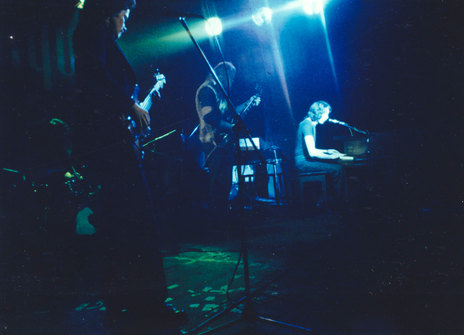
The Dennis O’Brien Band live at London’s Marquee Club in 1975, with Nick Theobald on bass and David Porter on drums
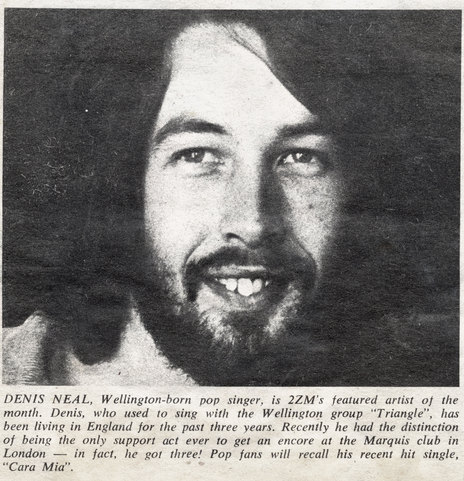
The Evening Post notes that Dennis is artist of the month on 2ZM, 1978.
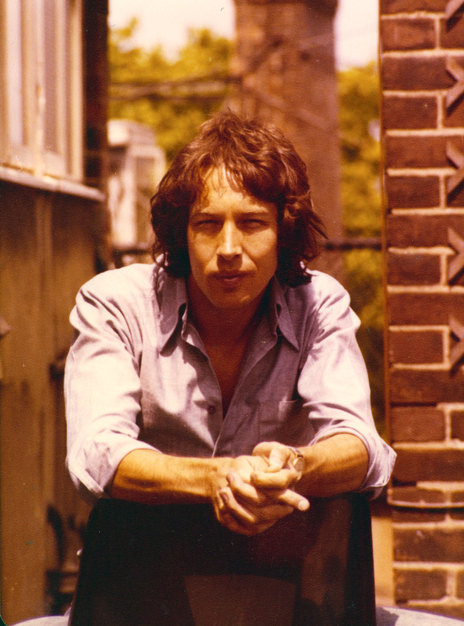
Dennis O'Brien in London, 1978
Photo credit:
Photo by Eric Swayne
Dennis O'Brien - She's In Love Again
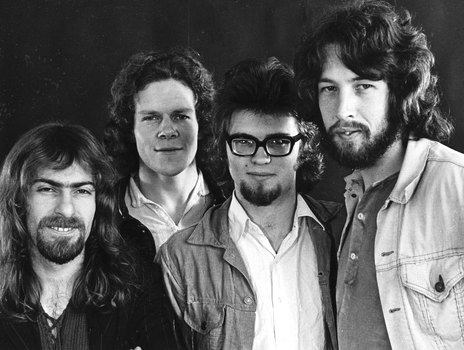
Triangle - Nedd Knowles, Nick Theobald, David Porter and Dennis O'Brien
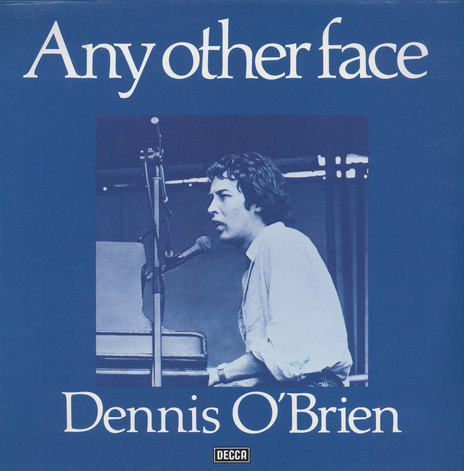
The European sleeve for Dennis O'Brien's 1979 album Any Other Face
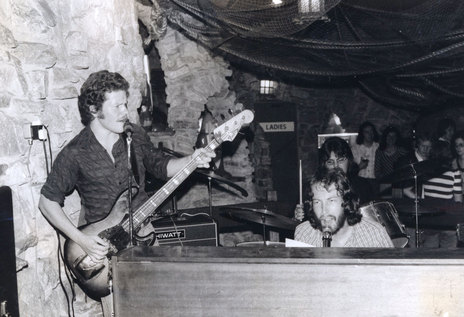
Nick Theobald, Dennis O’Brien, with Roger Watkins behind, London July 1974
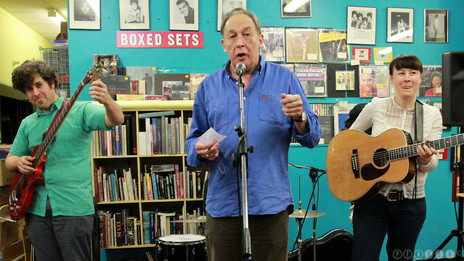
Dennis O'Brien introduces Eb & Sparrow at Record Store Day, Slow Boat. Slow Boat later released Sun/Son and Seeing Things on vinyl.
Photo credit:
Ebony Lamb Collection
Dennis O'Brien - Julia
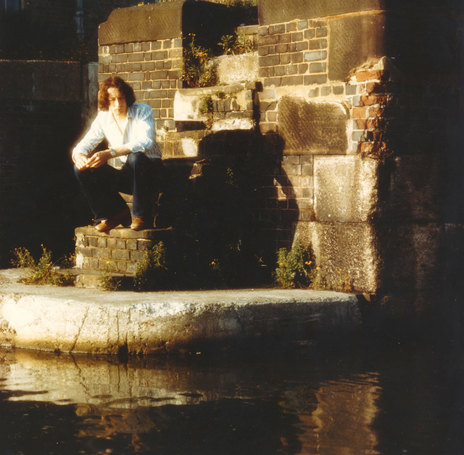
Dennis O'Brien in London, 1978
Photo credit:
Photo By Nic Swayze
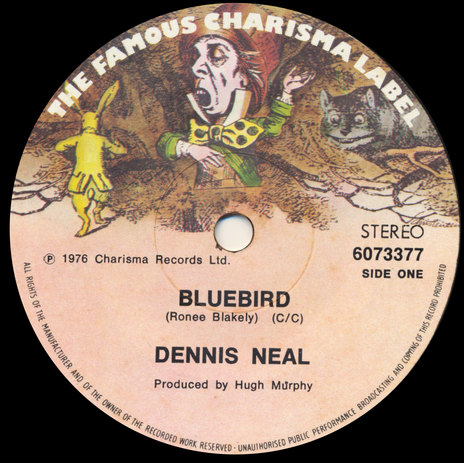
The New Zealand release of the 1976 Dennis Neal single Bluebird. The song was a cover of US songwriter Ronee Blakely's 1972 single.
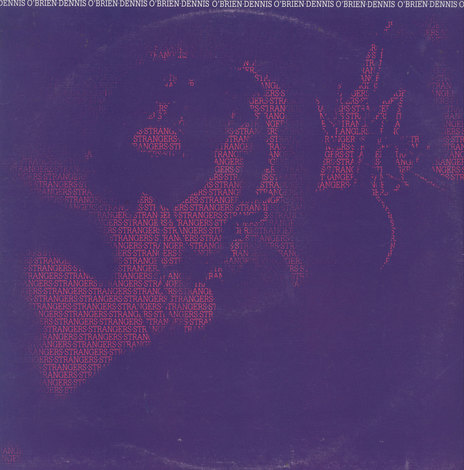
Dennis O'Brien's third album, Strangers, recorded at Wellington's Marmalade Studios by Dave Ginnane, produced by James Hall, and released in 1982 on that studio's new Toast label
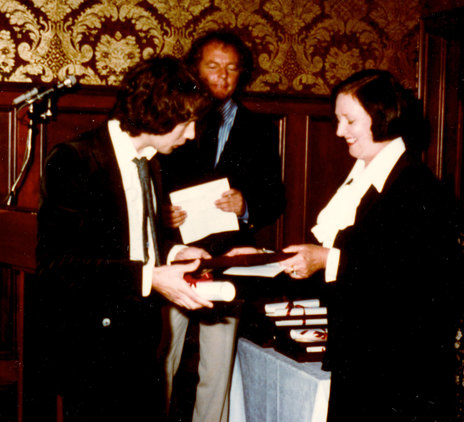
Dennis O'Brien wins Most Promising Male Vocalist at the 1978 NZ Music Awards at the White Heron Lodge in Parnell, Auckland. The award is being presented by Shona McFarlane and WEA's Tim Murcdoch looks on.
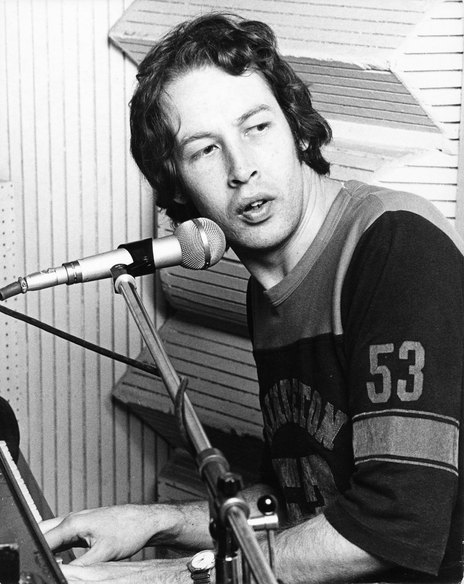
Dennis O'Brien in the studio, 1970s
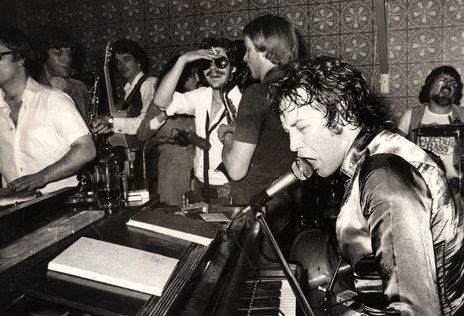
Dennis O’Brien in Wellington, mid-70s, with David Porter on percussion and Roger Watkins on drums
Dennis O'Brien - Any Other Face In The Rain
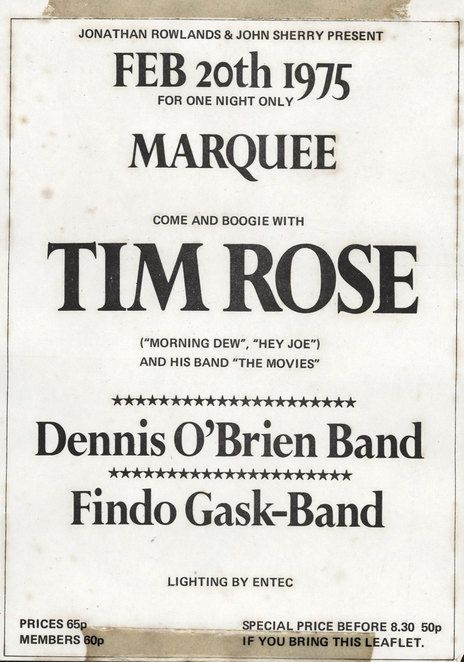
Dennis O'Brien at The Marquee, London, 1975
Dennis O'Brien - You Don't Know How Lucky You Are
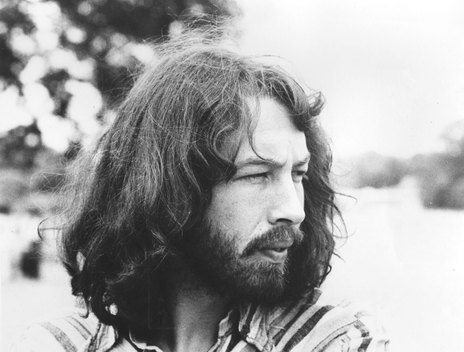
Dennis O'Brien, 1978
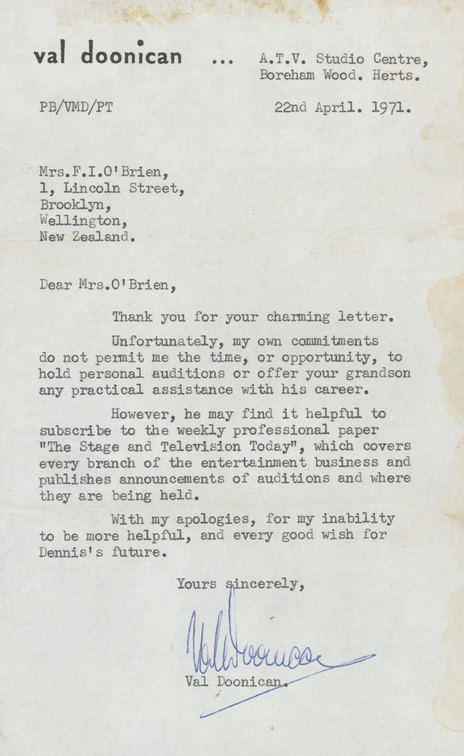
Dennis O'Brien's grandmother wrote to Val Doonican in 1971 asking for advice on advancing Dennis' career. This was the reply.
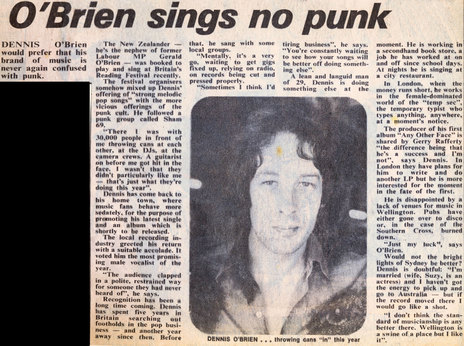
No Punk! Dennis O'Brien tells the Dominion in 1978
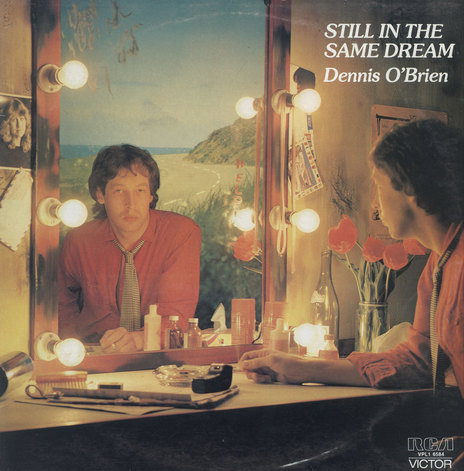
The 1980 album Still In The Same Dream, released by RCA under license from Wellington's Marmalade Studios. It was produced by James Hall with Dennis O'Brien.
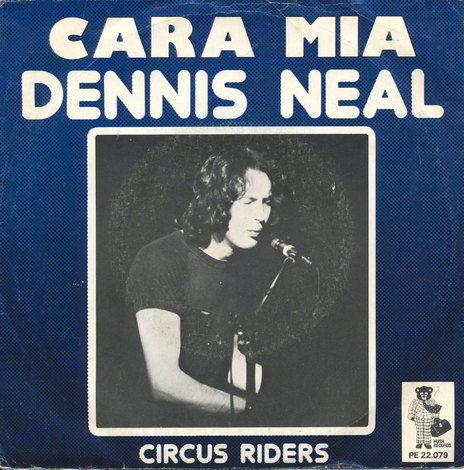
The Dutch cover of the 1975 Dennis Neal single Cara Mia
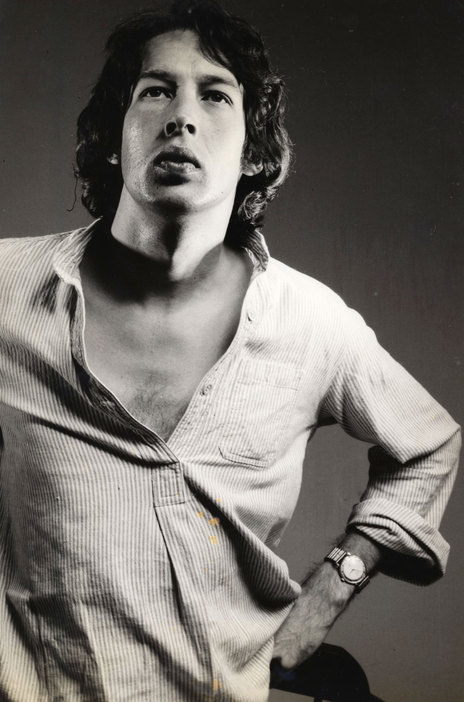
Dennis O'Brien publicity shot, 1970s
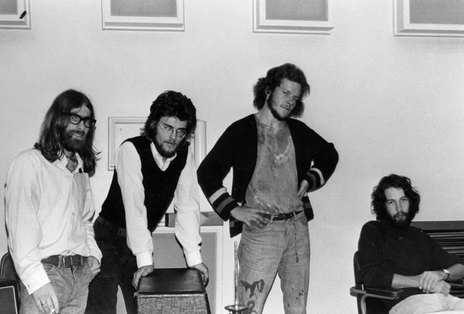
Triangle in the early 1970s: Nedd Knowles, David Porter, Nick Theobald and Dennis O'Brien
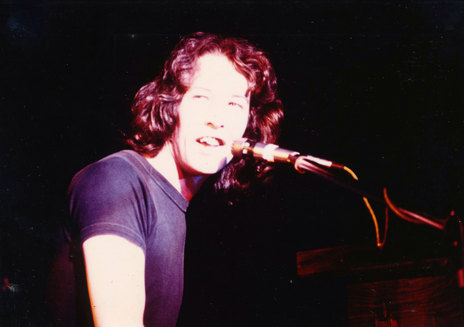
Dennis O'Brien at The Marquee, London, February 1978
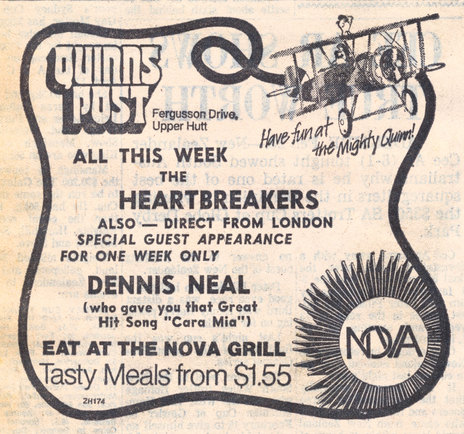
Dennis O'Brien and The Heartbreakers at Quinn's Post, Upper Hutt, 1978
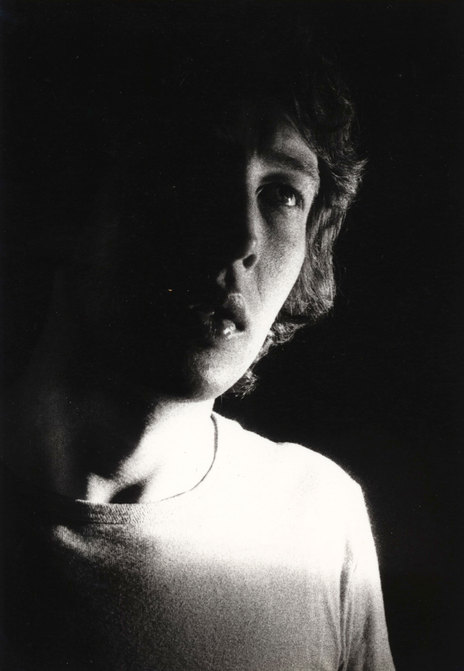
Dennis O'Brien, 1978
Photo credit:
Photo by Jocelyn Carlin
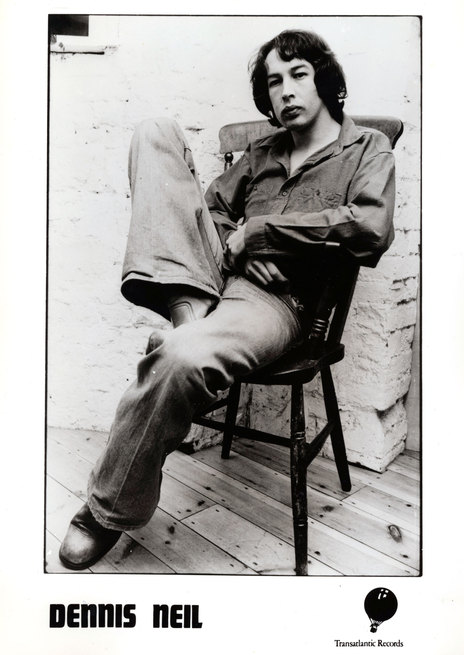
A Dennis Neil (sic) Transatlantic Records publicity shot from the mid-1970s
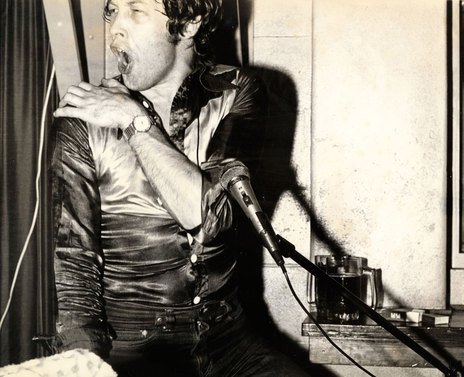
Dennis O'Brien live in Wellington the mid-1970s
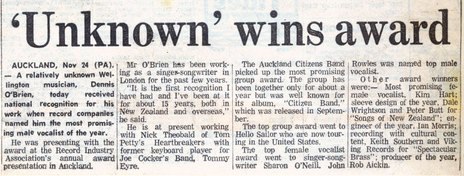
The Evening Post tags Dennis O'Brien as an "unknown" in 1978
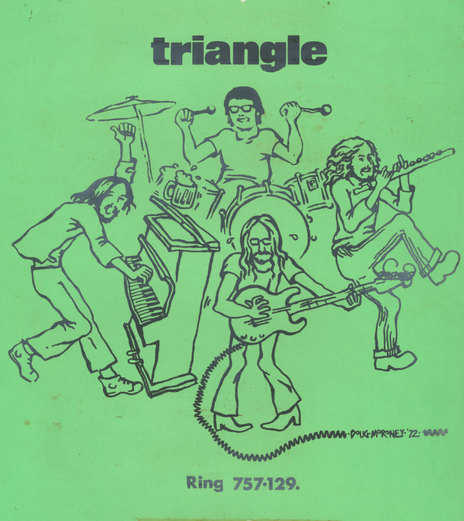
The business card for the quartet of Dennis O'Brien, David Porter, Nick Theobald and Dave "Nedd" Knowles. Calling themselves Triangle, both Porter and Theobald would be key songwriting collaborators in Dennis O'Brien's solo career.
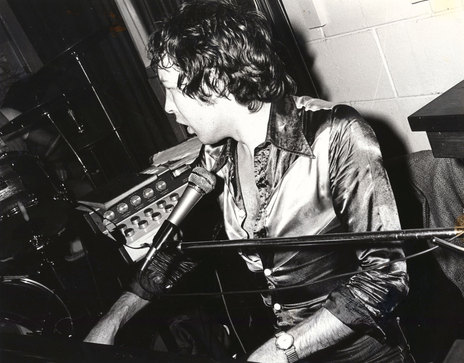
Dennis O'Brien in Wellington, mid-1970s
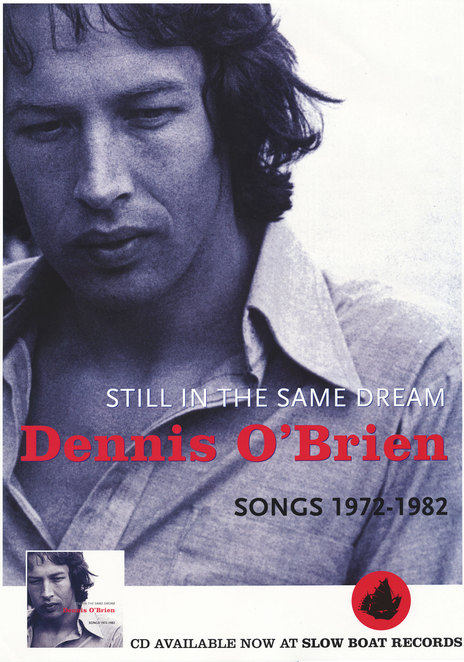
The poster for the CD compilation Still In the Same Dream – Songs 1972-1982, released by Dennis O'Brien's Slow Boat label in 2013
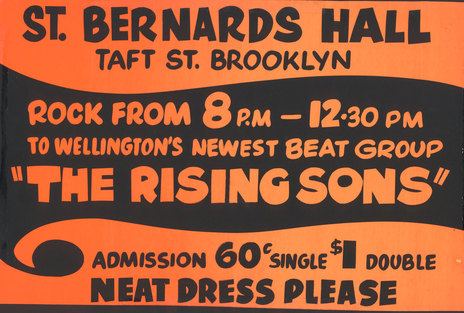
The Rising Sons, Dennis O'Brien's 1967 beat band.
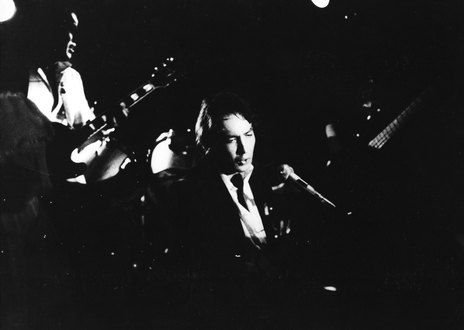
Dennis O'Brien, Harrington Mews, UK
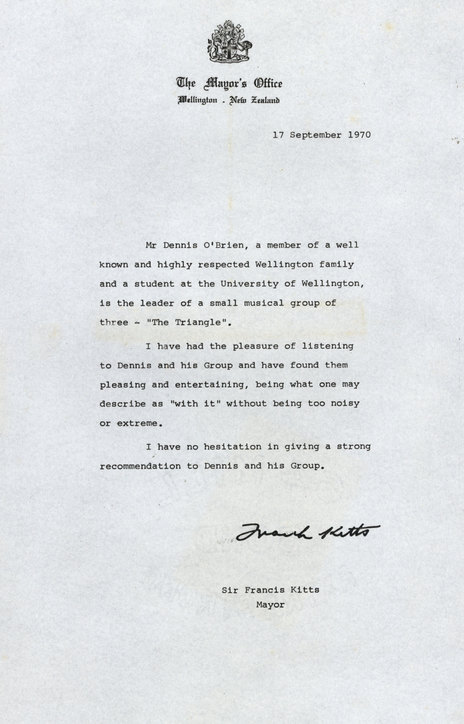
The Wellington Mayor in 1970, Sir Francis Kitts, likes Triangle
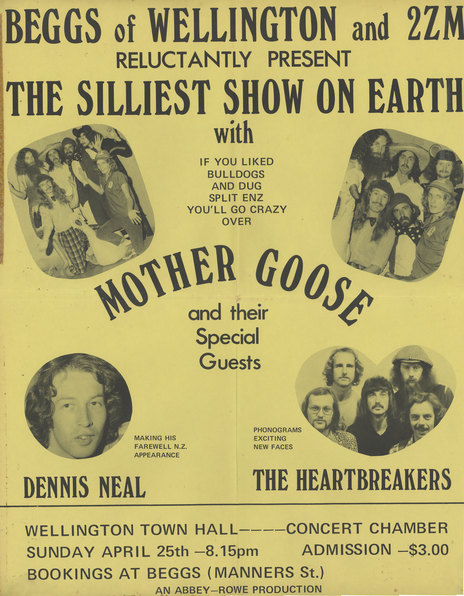
Mother Goose storm Wellington with guests Dennis O'Brien and The Heartbreakers, ANZAC Day, 1976
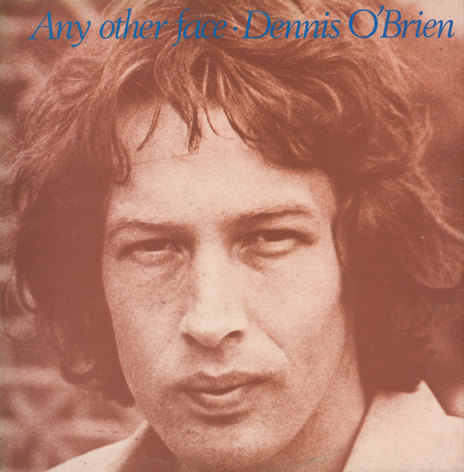
The New Zealand sleeve for the 1979 Any Other Face album, with a superior sleeve to the European one, designed by Dave Kent and photographed by Jonathan Rowlands. It was issued in New Zealand by Ode Records.
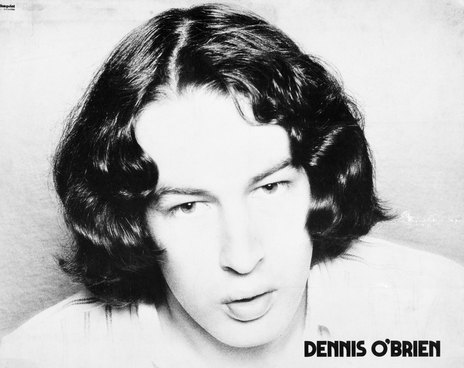
A mid-70s UK Dennis O'Brien publicity shot
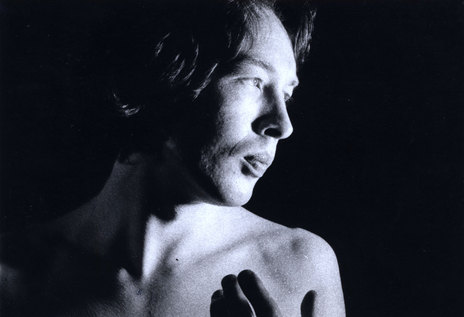
Dennis O'Brien, 1978
Photo credit:
Photo by Jocelyn Carlin
Dennis O'Brien - You Can Run
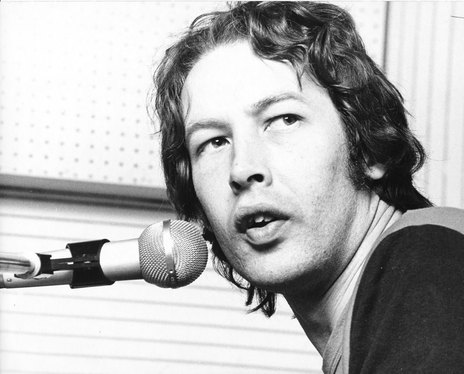
Dennis O'Brien recording in the mid-1970s
Photo credit:
Dennis O'Brien collection




